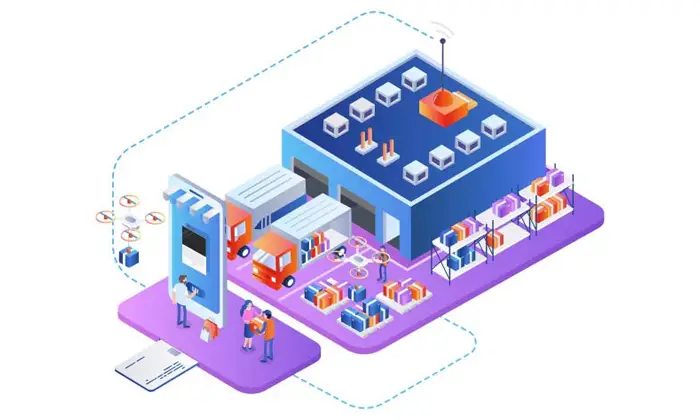What Is Supply Chain Management?
This field of work involves handling the entire production flow of a good or a service – from the raw components to delivering final products to the end-user. A network of suppliers is responsible for moving the product along from the suppliers to organizations dealing directly with users.
The key components of supply chain management are:
Planning – It includes proper planning and management of all resources to fulfill the customer’s demand for a company’s products or services.
Sourcing – It includes ordering, receiving, and managing inventory, and authorizing supplier payments.
Making – It includes organizing the activities required to acquire the raw materials, manufacture products, test for quality, package for shipping, and schedule for delivery.
Returning – This step includes creating a network or process to take back defective, unwanted, and excess products.
Enabling – It includes establishing support processes to monitor information throughout the supply chain and assuring compliance with all rules and regulations.
What Is the Internet of Things?
It refers to the billions of physical devices around the world that are now connected to the internet, all collecting and sharing data. With super-cheap computer chips and easy access to wireless networks, IoT’s ability to automate machines and assist self-sufficient technology is unlimited. Adding sensors to any device can improve its intelligence and enables it to communicate real-time data without involving the need for a human being to operate it.
IoT application is a collection of an extraordinary number of objects, such as smart microwaves that cook automatically for the right length of time, or self-driving cars with sensors that detect objects in their path. Also included are wearable fitness devices that measure your heart rate and create customized diet and exercise plans.
Major Ways in Which IoT Applications Impact Supply Chain Management
IoT enabled capabilities, and the supply chain management system operating on them is the new development in the tech-driven world. The following are also examples of IoT applications.
- IoT devices are attached to storage containers or raw materials or products and transmit the location. This can be picked up by GPS satellites and is useful in tracking the movement of goods.
- Tracking speed of movement and flow of goods helps in planning the navigation of products through the supply chain. Suppliers, manufacturers, and distribution centers are better prepared to receive the goods, which in turn reduces handling times and ensures efficient processing of materials.
- Specialized IoT devices help in the proper storage of perishable items by maintaining temperature, humidity, exposure to the atmosphere, light intensity, and other environmental factors. These devices even trigger an alarm in case any benchmarks are breached, which helps in taking corrective measures and reducing spoilage.
- Goods tracking and route planning through IoT devices can identify where and when products get delayed in the transit. It allows for contingency planning and alternative routes to be followed.
- With advanced IoT technology, it is easier to label goods within a distribution center, which in turn makes it easier to locate specific items without wasting time exploring the entire warehouse. It also increases the accurate identification and management of goods.
It is always smarter to opt for professionals and experienced market leaders when it comes to deploying the latest technology. Trakaid is a leading player in providing advanced solutions for Radio Frequency Identification (RFID) enabled smart asset tracking and factory automation.
